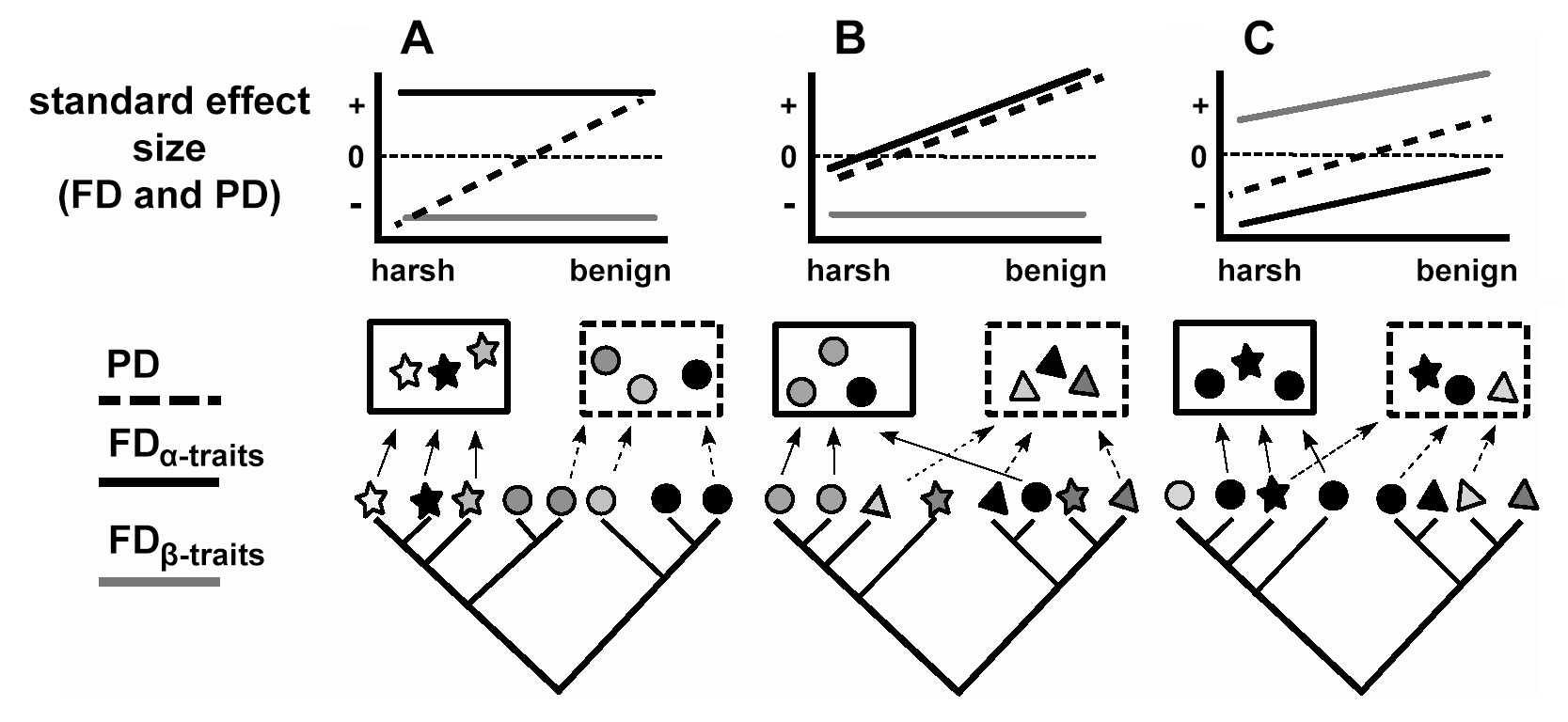
Hypothetical examples where PD shows the pattern predicted by the SDH, but FDα-traits and FDβ-traits show that the SDH is not supported.
For each example (A-B), individual species are represented by symbols at the tips of the phylogenetic tree; the shape of the symbols represents beta traits, the color of the symbols represents alpha traits, and communities are represented by rectangles. In each example, we show two communities, one at the stressful and one at the benign end of the stress gradient. In case A, both alpha and beta traits are labile on the phylogeny, and looking at these traits would suggest that there is not a shift from environmental filtering to competition along the stress gradient. In case B, the alpha trait is phylogenetically conserved but the beta trait is not, so while the PD pattern appears to support the SDH, the beta trait pattern shows that there is no change in the importance of environmental filtering along the gradient. In case C, the expected PD pattern is generated from strong competition causing competitive exclusion and clustering of FDα-traits at the harsh end of the gradient and environmental heterogeneity and fine-scale environmental filtering causing overdispersion of FDβ-traits at the benign end of the gradient.